If you are using the latest version of Windows 10 and looking for a way to Setup and Use HomeGroup on your computer, the bad news is that Microsoft has removed HomeGroup from Windows 10 (version 1803).
Previously HomeGroup was available in Windows 7, Windows 8, Windows 10 (Pre 1803 versions) and certain features of HomeGroup were also available in Windows RT 8.1.
For those who are new, HomeGroup can be defined as a local network sharing feature in Windows OS that made it easy for multiple computers to share common resources like Files, Photos, Documents, Printers and devices with other computers residing on the same network.
While Microsoft does not provide any specific reason for removing HomeGroup on its support page, it states that users can still share printers and files using features that are built-into Windows 10.
1. How to Setup HomeGroup in Windows 10
If you are using an older (Pre 1803) version of Windows 10, you can follow the steps below to setup a HomeGroup on your computer.
1. Go to Settings > Network and Internet > Status > In the right-pane, click on the HomeGroup tab located under “Change your network settings” section.
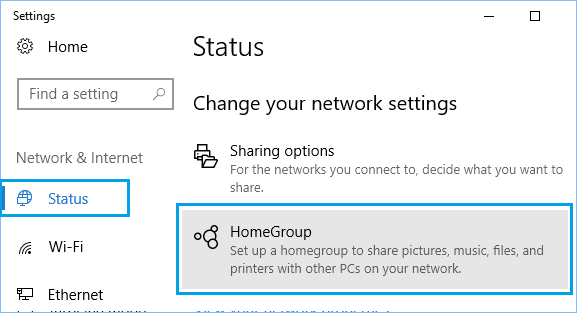
2. On the HomeGroup screen, click on Create a HomeGroup button.
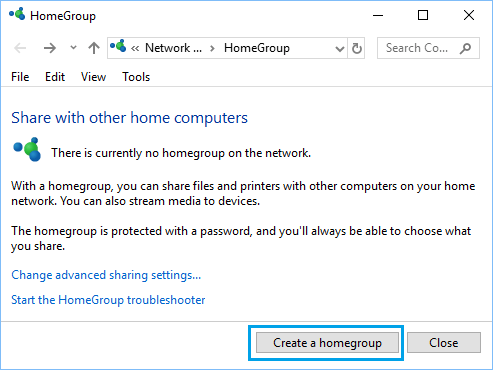
3. On Create a Homegroup screen, use the drop-downs to select what you want to Share with Home Group computers and click on Next.
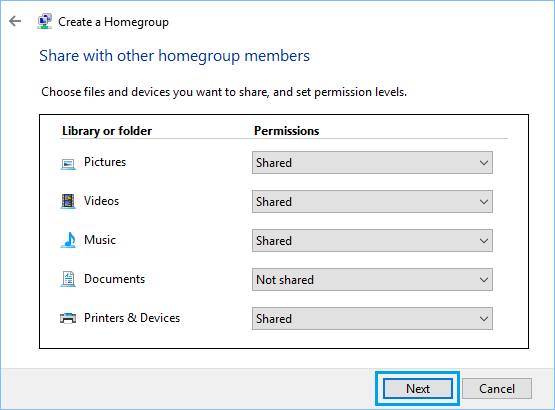
Note: By default, Pictures, Videos, Music, Printers & Devices will be set as shared, while Documents will not be shared.
4. On the next screen, you will see a Password created by Windows for the HomeGroup. Note down this password, as it will be needed to allow other computers to access Files, Printers and other common resources on the network.
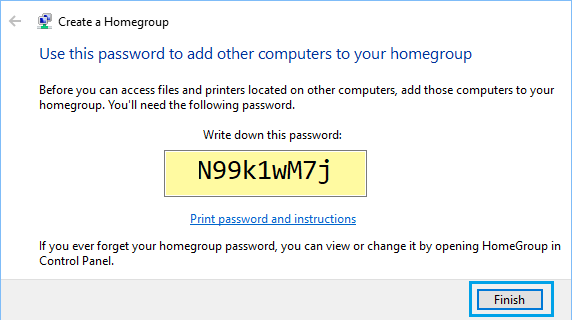
5. Click on the Finish button to complete the process of setting up HomeGroup on your computer.
2. How to Add Computers to HomeGroup
Now that you have created a HomeGroup and generated a password for the HomeGroup, the next step is to Add other computers to this HomeGroup.
1. Login to the computer that you want to Add to the HomeGroup.
2. Go to Settings > Network & Internet > Status > HomeGroup > click on the Join Now button.
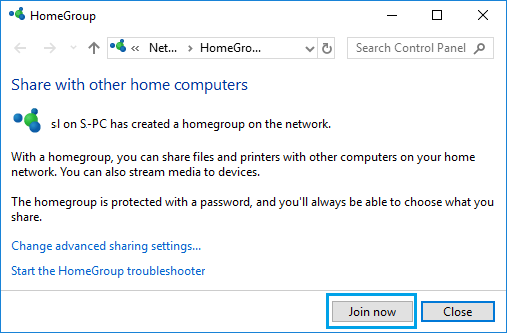
4. On Join Homegroup screen, use the drop-downs to select Folders, Printers and Devices that you want to Share with HomeGroup and click on Next.
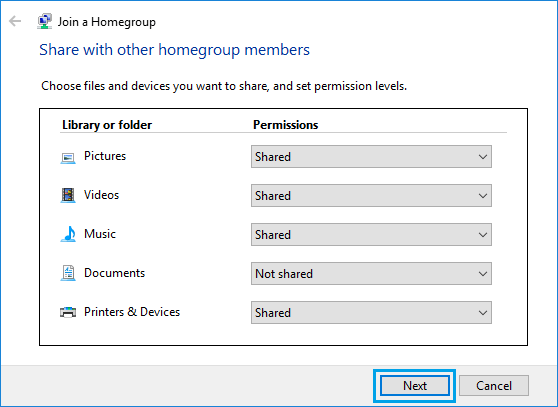
5. On the next screen, type the HomeGroup Password > click on Next > click on Finish to complete the setup.
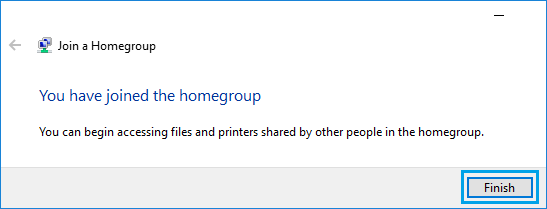
3. How to Remove Computers From HomeGroup
At any time you can remove a computer from HomeGroup by following the steps below
1. Go to Settings > Network & Internet > Status > HomeGroup.
2. On the HomeGroup screen, click on Leave the HomeGroup… link.
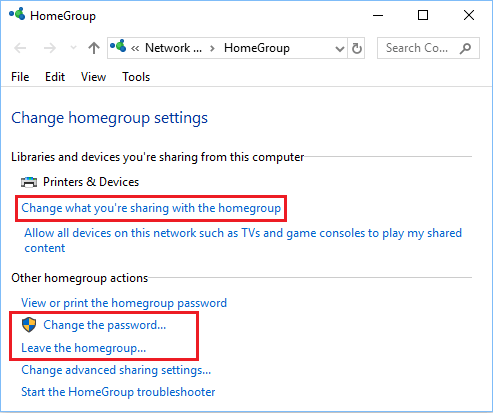
3. On the pop-up, click on Leave HomeGroup option to confirm.
4. How to Change HomeGroup Password
Before you change HomeGroup password, make sure that all HomeGroup computers are ON (not asleep or hibernating)
1. Go to Settings > Network & Internet > Status > HomeGroup.
2. On the next screen, click on Change HomeGroup Password… Link

3. On the next screen, click on Change Password option.
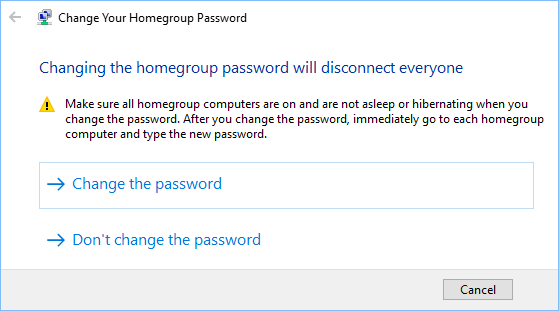
4. On the next screen, type your new HomeGroup Password and click on Finish.
5. How to Add New Folder to HomeGroup
The simplest way to Add a new Folder to HomeGroup is to right-click on the Folder, select Give Access to and click on HomeGroup View option.
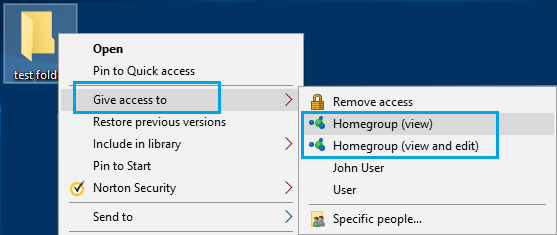
Note: Selecting HomeGroup (View & Edit) option will allow others to edit your files.
Once you have shared a Folder in HomeGroup, other computers on the HomeGroup network can access this shared folder by opening File Explorer (Win+E) and clicking on the Computer Name under HomeGroup in the side-menu.
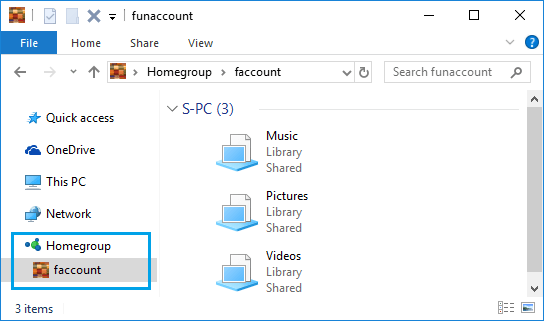
If You are Having Problems Creating HomeGroup
Make sure that only the computer on which you are creating the new HomeGroup is open and all other computers and devices are shut down.
Next, make sure that your computer is able to use Internet Protocol Version 6 (TCP/IPv6).
1. Go to Settings > Network & Internet > Status > Change Adapter Options.
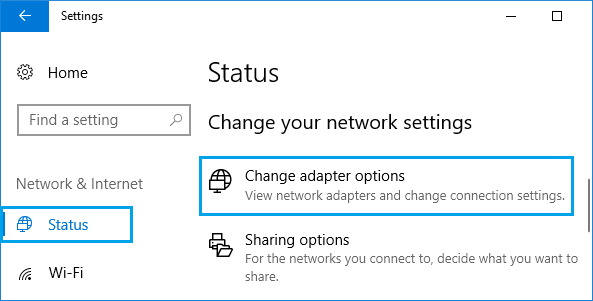
2. On the next screen, right-click on your WiFi or Ethernet network and click on Properties option in the contextual menu.
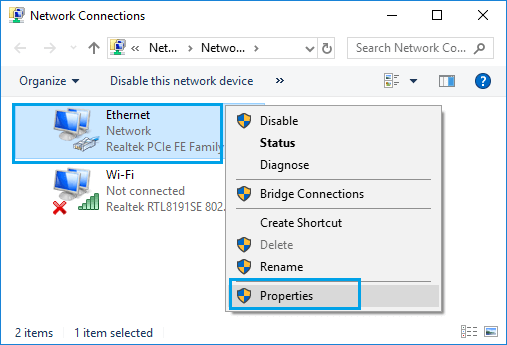
3. On the Network properties screen, make sure that TCP/IPV6 option is selected.
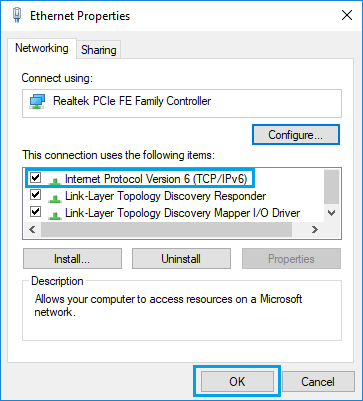
4. Click on OK to save this setting on your computer.